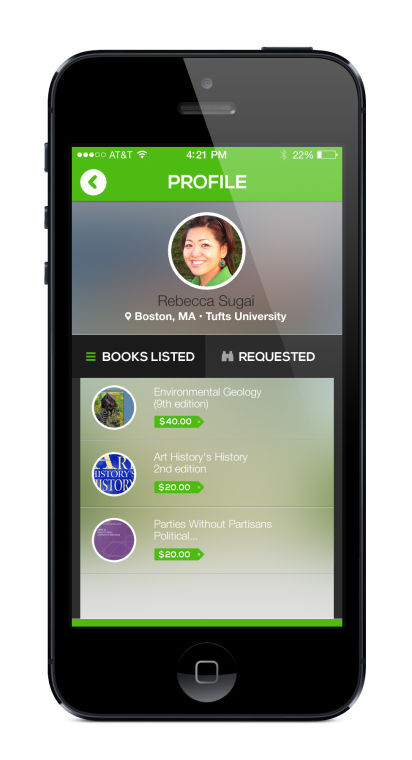
BookBridges
When senior aerospace engineering major Gerard Taylor developed an app to help college students buy and share textbooks, he knew he was tapping into something unique.
“I’ve looked around, and I haven’t been able to find anything like it,” he said. “I know Amazon has an app that allows you to scan the book’s barcode to look up a price, but that’s about it.”
Taylor’s app, BookBridges, allows users to buy and sell books locally. Although users can sell any type of book, the app is mostly geared toward textbooks. Its appeal, Taylor said, is that there is no third party involved in the transaction.
Students often post in Facebook groups indicating they are buying or selling a textbook. Other than that, there aren’t many other effective outlets through which students can buy and sell books to one another, Taylor said.
“It seems like a great way of shortening the book-buying process and making it easier and safer,” said Jacques Cassagnol, a sophomore enrolled in letters and sciences.
Buyer and sellers arrange face-to-face transactions and agree to the terms of sale. Payments will ideally be made in cash, although it is ultimately up to the parties involved, Taylor wrote in an email.
Although the app is geared toward students, anyone can use it, Taylor wrote in an email. Users create personal profiles complete with usernames, ensuring shoppers’ anonymity if they want it. After they create profiles, users can post books they are selling, request books and form “connections” — allowing buyers and sellers to message one another through a chat feature. BookBridges can also be linked to Facebook, Taylor said.
The app can be used for any major university in the continental United States, not just this university, Taylor said.
Taylor first began working on BookBridges in March, originally intending for it to be a website. In August, however, he decided an app was a better idea, and after designing the user interface, Taylor paid Crucial App Concepts about $4,500 to code the app for him.
With the help of a book called Idea to iPhone, Taylor navigated each step of the process, from raw hand-drawn mock-ups to the app’s final stages. Although he had a few friends help him design the app’s logo, icon and website, he undertook most of the work by himself, Taylor wrote in an email.
“For my particular case, I had a fantastic idea, but I had zero idea how to implement it on a mobile platform,” he wrote. “The book showed me where to find designers and developers, how to start a successful marketing campaign and so much more.”
BookBridges will be free and is set to launch in January, Taylor said. Depending on the iPhone version’s success, he may develop an Android version in the future.
As college becomes increasingly expensive, some students said textbooks are a necessary expense with often little return value.
“The last time I went to the bookstore, I returned a book that I originally bought for $83, and I only received about $16 back,” said Kevin Content, a junior physics major. “It’s really frustrating because the book was still in pretty good condition, and I only had it for a few months. Now I pretty much just use Amazon to buy all my books.”
Taylor’s ultimate goal with BookBridges, he said, is to help students save money to try to reduce the stress of college.
“The primary motivation for creating this app was to help students reduce their academic expenses as much as possible,” Taylor wrote in an email.
newsumdbk@gmail.com/@thedbk



